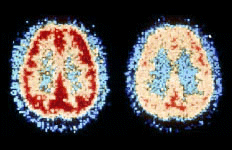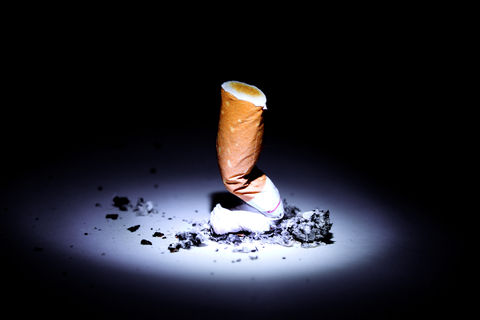Cocaine Addiction & Rehabilitation
Cocaine is extracted from the plant called Erythroxylon coca. It is a local anesthetic and central nervous system stimulant. It can be taken by chewing on coca leaves, smoked as “crack” cocaine, inhaled (“snorted”) or injected.
Cocaine is the second most commonly used illicit drug (following marijuana) in the U.S. More than 34 million Americans (14.7%) age 12 or older have used cocaine at least once in their lifetime. Up to 75% of people who try cocaine will become addicted to it. Only one out of four people who try to quit will be able to do so without help.
Cocaine Toxicity on the Brain and the Body
Cocaine acts by blocking the reuptake of the neurotransmitters dopamine, norepinephrine and serotonin in the brain. Therefore, these neurotransmitters stay in the synaptic cleft for a longer time and have an extended action on the brain. Research has also shown that cocaine can cause the release of dopamine from neurons in the brain.
Cocaine can also affect the peripheral nervous system. These effects include constriction of blood vessels, dilation of the pupil and irregular heartbeat.
The Brain on Cocaine
 These two images of the brain are positron emission tomography (PET) scans of a normal person (picture on the left) and of a person on cocaine (picture on the right).
These two images of the brain are positron emission tomography (PET) scans of a normal person (picture on the left) and of a person on cocaine (picture on the right).
The PET scan shows brain function by seeing how the brain uses glucose, the energy source for neurons. In these scans, the red color shows high use of glucose, yellow shows medium use and blue shows the least use of glucose.
Notice that many areas of the brain of the cocaine user do not use glucose as effectively as the brain of the normal person. This can be observed by the lower amounts of red in the right PET scan.
Damaging Effects
Abusing cocaine has a variety of adverse effects on the body. For example, cocaine:
- constricts blood vessels,
- dilates pupils, and
- increases body temperature, heart rate, and
- increases blood pressure
- causes repeated microscopic strokes in the brain, leading to dead spots in the brain’s nerve circuitry
- can also cause headaches and
- gastrointestinal complications such as abdominal pain and nausea.
- because cocaine tends to decrease appetite, chronic users can become malnourished as well.
Withdrawal Symptoms
Cocaine withdrawal symptoms include but are not limited to:
- agitation
- depression
- intense craving for the drug
- extreme fatigue
- anxiety
- angry outbursts
- lack of motivation
- nausea/vomiting
- shaking
- irritability
- muscle pain
- disturbed sleep
Natural Detoxification & Rehabilitation Treatment
Our holistic natural detox treatment includes:
It controls all withdrawal symptoms such as agitation, insomnia, anxiety, depression, anger, cravings, fatigue, nausea, vomiting, shakes, irritability, muscle pain. We have treated numerous individuals with cocaine addiction with very good recovery rates.
Cocaine Usage
Cocaine is the second most commonly used illicit drug (following marijuana) in the U.S. More than 34 million Americans (14.7%) age 12 or older have used cocaine at least once in their lifetime.
Up to 75% of people who try cocaine will become addicted to it. Only one out of four people who try to quit will be able to do so without help.
Specific Addictions & Rehabilitation
- Alcohol Abuse
- Benzodiazepines / Tranquilizers / Muscle Relaxers (Xanax, Valium, Klonopin, Ativan, Ambien, Lorazepam)
- Caffeine
- Cocaine
- Hallucinogens / LSD / PCP
- Food Addiction
- Marijuana
- Methamphetamine / Ecstasy / Party Drugs
- Opiates / Opioids / Painkillers (OxyCotin, Vicodin, Norco, Dilaudid, Methadone, Oxycodone, Heroin)
- Smoking / Nicotine / Tobacco
- Sex Addiction
- Sugar
Now is the Time to Mind Your Body & Mend Your Mind
HAWAII NATURAL DRUG REHABILITATION & RAW DETOXIFICATION CENTER
Holistic Natural Residential Rehabilitation Programs for freedom from addiction to legal and illegal substances – drawing from Naturopathic and Detoxification medicine, Behavioral and Psychodynamic Therapy approaches, Stress Reduction Techniques, Meditation, Yoga and Spiritual Practices. We take only a small amount of clients, and our programs are individually designed. Our use of the ocean, the recreational activities & natural approaches facilitate recovery.
Natural Drug and Alcohol Detoxification with Raw Foods
What Others Experienced
Perhaps most valuable was the attentive natural medical support; I feel all of the above could be wasted without it. Dr. Baylac studied my case thoroughly, ordered tests that revealed underlying issues that MD’s have overlooked for years, and tweaked my customized supplement routine and IV therapy support as needed. Though drug withdrawals and food cravings were nursed to minimal discomfort (massages, teas, baths & lots of love helped), my first few weeks of detox were rough with mood instability, psychadellic flashbacks, nightmares, and occasional vomiting. I was probably a tough customer to restore to sanity, but because of her intuitive nurturing and sincere passion for helping, I was able to open up and trust Dr. Baylac and her phenomenal team to guide me to serenity.
I stayed at the Retreat for 6 weeks and this time truly changed my life. I had surgery and became addicted to opiates. One thing led to another, and before I knew it seven years of my life went by on drugs. Methadone was my drug of choice and I had tried five ‘detoxes’ and two rehabs to kick this drug. Nothing seemed to work. I suffered hard at these traditional rehabs. But I was surrounded by negative people and bad food. At the Hawaii retreat it was almost the opposite. Yeah, I went through a rough detox but the food, saunas, enemas, hydrogen peroxide baths, massages and tons of other things made it bearable. I fully detoxed from methadone and it was not as painful as it had been in the past. I’m really grateful that I had the opportunity to come here.




